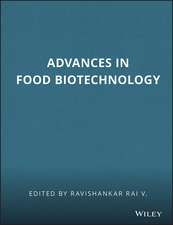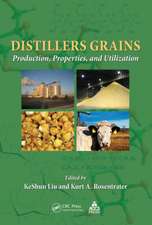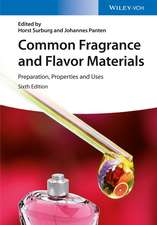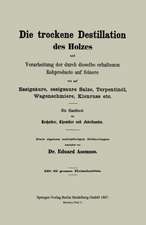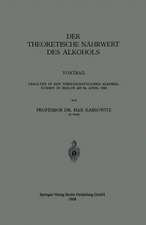Soybeans: Chemistry, Technology, and Utilization
Autor KeShun Liuen Limba Engleză Paperback – 21 oct 2012
| Toate formatele și edițiile | Preț | Express |
|---|---|---|
| Paperback (1) | 402.00 lei 6-8 săpt. | |
| Springer Us – 21 oct 2012 | 402.00 lei 6-8 săpt. | |
| Hardback (1) | 1235.43 lei 6-8 săpt. | |
| Springer Us – 30 iul 1997 | 1235.43 lei 6-8 săpt. |
Preț: 402.00 lei
Nou
Puncte Express: 603
Preț estimativ în valută:
76.93€ • 80.02$ • 63.51£
76.93€ • 80.02$ • 63.51£
Carte tipărită la comandă
Livrare economică 14-28 aprilie
Preluare comenzi: 021 569.72.76
Specificații
ISBN-13: 9781461357117
ISBN-10: 146135711X
Pagini: 564
Ilustrații: XXVII, 532 p. 44 illus.
Dimensiuni: 152 x 229 x 30 mm
Greutate: 0.74 kg
Ediția:1997
Editura: Springer Us
Colecția Springer
Locul publicării:New York, NY, United States
ISBN-10: 146135711X
Pagini: 564
Ilustrații: XXVII, 532 p. 44 illus.
Dimensiuni: 152 x 229 x 30 mm
Greutate: 0.74 kg
Ediția:1997
Editura: Springer Us
Colecția Springer
Locul publicării:New York, NY, United States
Public țintă
ResearchCuprins
1. Argonomic Characteristics, Production, and Marketing.- I. Origin.- II. Early History in Europe.- III. Early History in North America.- IV. Agronomic Characteristics.- V. Harvesting, Drying, and Storage.- VI. Marketing and Trading.- VII. Grades, Standards, and Inspection.- VII. Variety Identification.- IX. Food Beans and Oil Beans.- References.- 2. Chemistry and Nutritional Value of Soybean Components.- I. Proximate Composition.- II. Lipids.- III. Proteins.- IV. Carbohydrates.- V. Minor Components.- VI. Soy Hulls.- VII. Hypocotyl Axis.- References.- 3. Biological and Compositional Changes during Soybean Maturation, Storage, and Germination.- I. Changes during Soybean Maturation.- II. Biological Aging during Soybean Storage.- III. Changes during Soybean Germination.- 4. Nonfermented Oriental Soyfoods.- I. Soymilk.- II. Tofu.- III. Yuba.- IV. Other Nonfermented Soyfoods.- References.- 5. Fermented Oriental Soyfoods.- I. Fermented Soy Paste (Jiang and Miso).- II. Soy Sauce (Jiangyou or Shoyu).- III. Tempeh.- IV. Natto.- V. Soy Nuggets (Douchi or Hamanatto).- VI. Sufu.- References.- 6. Soybean Oil Extraction and Processing Andrew Proctor.- I. Preparation before Extraction.- II. Solvent Extraction.- III. Mechanical Extraction.- IV. Oil Refining.- V. Optional Additional Processing.- VI. Lecithin Processing.- VII. Plant and Environmental Safety.- References.- 7. Properties and Edible Applications of Soybean Oil.- I. General Properties of Soybean Oil.- II. Lipid Oxidation.- III. Various Types of Soybean Oil.- IV. Edible Applications of Soybean Oil.- V. Utilization of Soy Lecithin.- References.- 8. Soybean Protein Products Navam Hettiarachchy and Uruthira Kalapathy.- I. A Brief History of Soy Protein Products.- II. Types of Soy Protein Products and Processing.- III. Nutritional Quality of Soy Protein.- IV. Soy Protein as a Functional Ingredient.- V. Modification of Soy Proteins.- VI. Applications of Soy Protein Products.- VII. Challenges and Future Research.- References.- 9. The Second Generation of Soyfoods.- I. Dairy Analogs.- II. Meat Analogs.- III. Protein Texturization.- IV. Tofu-Based Foods and Ingredients.- References.- 10. Soyfoods: Their Role in Disease Prevention and Treatment.- I. Diet, Health, and Soyfoods.- II. Macronutrients in Soybeans.- III. Soy Isoflavones.- IV. Soy Intake and Cancer Risk.- V. Soy Intake and Osteoporosis.- VI. Soy Intake and Kidney Disease.- VII. Soy Intake and Heart Disease.- VIII. Soy Intake and Menopause.- IX. Potential Concerns Related to Soy Consumption.- X. Summary.- References.- 11. Soybean Improvements through Plant Breeding and Genetic Engineering.- I. The Breeding Process.- II. Breeding Methods.- III. Breeding to Increase Crop Productivity.- IV. Breeding for Food-Grade Soybeans.- V. Breeding to Increase Protein and Oil Content.- VI. Breeding to Improve Oil Quality.- VII. Breeding to Improve Protein Quality.- VIII. Breeding to Control Beany Flavor.- References.



